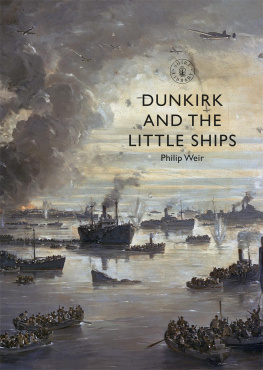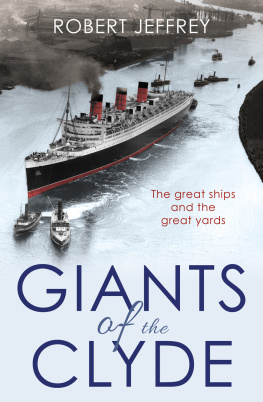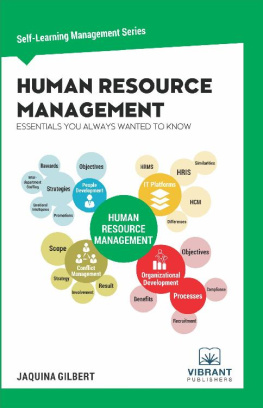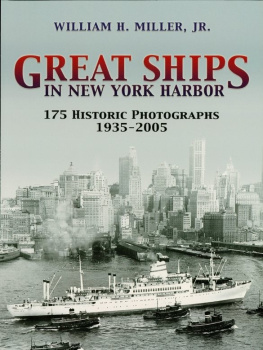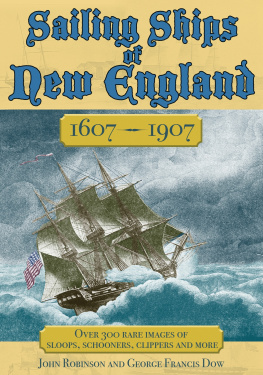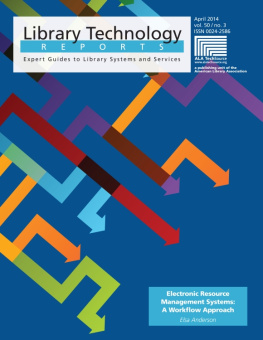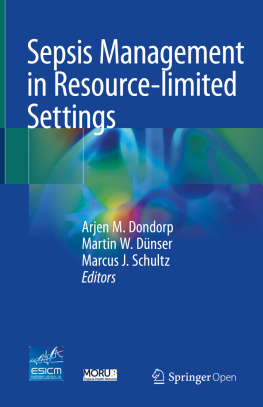Bridge Resource Management for Small Ships

The salvage operation in full swing after the Herald of Free Enterprise rolled on its side and sank. (Scaldis)
Bridge Resource Management for Small Ships
The Watchkeepers Manual for Limited-Tonnage Vessels
Captain Daniel S. Parrott


Copyright 2011 by Daniel S. Parrott. All rights reserved. Except as permitted under the United States Copyright Act of 1976, no part of this publication may be reproduced or distributed in any form or by any means, or stored in a database or retrieval system, without the prior written permission of the publisher.
ISBN: 978-0-07-155008-6
MHID: 0-07-155008-9
The material in this eBook also appears in the print version of this title: ISBN: 978-0-07-155007-9, MHID: 0-07-155007-0.
All trademarks are trademarks of their respective owners. Rather than put a trademark symbol after every occurrence of a trademarked name, we use names in an editorial fashion only, and to the benefit of the trademark owner, with no intention of infringement of the trademark. Where such designations appear in this book, they have been printed with initial caps.
McGraw-Hill eBooks are available at special quantity discounts to use as premiums and sales promotions, or for use in corporate training programs. To contact a representative please e-mail us at bulksales@mcgraw-hill.com.
This publication is designed to provide accurate and authoritative information in regard to the subject matter covered. It is sold with the understanding that neither the author nor the publisher is engaged in rendering legal, accounting, securities trading, or other professional services. If legal advice or other expert assistance is required, the services of a competent professional person should be sought.
From a Declaration of Principles Jointly Adopted by a Committee of the American Bar Association and a Committee of Publishers and Associations
TERMS OF USE
This is a copyrighted work and The McGraw-Hill Companies, Inc. (McGraw-Hill) and its licensors reserve all rights in and to the work. Use of this work is subject to these terms. Except as permitted under the Copyright Act of 1976 and the right to store and retrieve one copy of the work, you may not decompile, disassemble, reverse engineer, reproduce, modify, create derivative works based upon, transmit, distribute, disseminate, sell, publish or sublicense the work or any part of it without McGraw-Hills prior consent. You may use the work for your own noncommercial and personal use; any other use of the work is strictly prohibited. Your right to use the work may be terminated if you fail to comply with these terms.
THE WORK IS PROVIDED AS IS. McGRAW-HILL AND ITS LICENSORS MAKE NO GUARANTEES OR WARRANTIES AS TO THE ACCURACY, ADEQUACY OR COMPLETENESS OF OR RESULTS TO BE OBTAINED FROM USING THE WORK, INCLUDING ANY INFORMATION THAT CAN BE ACCESSED THROUGH THE WORK VIA HYPERLINK OR OTHERWISE, AND EXPRESSLY DISCLAIM ANY WARRANTY, EXPRESS OR IMPLIED, INCLUDING BUT NOT LIMITED TO IMPLIED WARRANTIES OF MERCHANTABILITY OR FITNESS FOR A PARTICULAR PURPOSE. McGraw-Hill and its licensors do not warrant or guarantee that the functions contained in the work will meet your requirements or that its operation will be uninterrupted or error free. Neither McGraw-Hill nor its licensors shall be liable to you or anyone else for any inaccuracy, error or omission, regardless of cause, in the work or for any damages resulting therefrom. McGraw-Hill has no responsibility for the content of any information accessed through the work. Under no circumstances shall McGraw-Hill and/or its licensors be liable for any indirect, incidental, special, punitive, consequential or similar damages that result from the use of or inability to use the work, even if any of them has been advised of the possibility of such damages. This limitation of liability shall apply to any claim or cause whatsoever whether such claim or cause arises in contract, tort or otherwise.
To mariners everywhere who must balance the expectations of the shore against the demands of the sea
Contents
Prologue
The Herald of Free Enterprise
ON MARCH 6, 1987, the modern cross-channel ferry Herald of Free Enterprise left its berth at Zeebrugge, Belgium, for the routine 70-mile run across the North Sea to Dover, England. There is, perhaps, no maritime endeavor more prosaic than that of a ferry. Four minutes after passing through the jetties, the Herald rolled over and sank with the loss of 188 lives.
The Herald of Free Enterprise sank because no one was aware its enormous bow doors had been left open, allowing the North Sea to wash in. Because of the tide that day, the bow had been ballasted down to facilitate loading, and the Herald remained trimmed by the head at departure. The assistant boatswain, whose job it was to close the bow doors, had fallen asleep in his bunk during the loading and did not awaken when called to get underway. His immediate supervisor, the boatswain, had been working near the bow doors prior to sailing and noticed that they were open and that nobody was standing by the controls, but he proceeded to his own station without giving it any more thought. He explained later, It has never been part of my duties to close the doors or make sure anybody is there to close the doors.

The salvage operation in full swing after the Herald of Free Enterprise rolled on its side and sank. (Scaldis)
Written operational procedures stated that it was the duty of the loading officer to ensure the doors were secure when leaving port. This was not what usually took place, however. In practice, loading officers frequently left the area once they saw the assistant boatswain standing by the door controls. This enabled loading officers to get to their sailing stations so the ferry could sail on time. Sometimes the loading officer was the second officer (second mate); sometimes it was the first officer (chief or first mate). On this occasion it had been both. The first officer started the loading but the second officer relieved him early in the process. A little while later the first officer took over again without explanation. Subsequent interviews with both men suggested that on this particular day there was some tension between the two officers. When the first officer resumed the loading there was no clear transfer of responsibility; the two men did not meet face to face. The second officer heard the first officer giving loading orders over the radio and concluded that the job had been taken away. When the loading was finished, the first officer headed for the bridge as required, but there was still no one at the door controls. The second officer, who by this time had left the scene, said later, He took over as loading officer so I assumed he took the responsibilities that go with that job.
The first officer told investigators that he thought he had seen a man approaching the bow door controls but was then distracted. Whoever he thought he saw, it was not the assistant boatswain because the assistant boatswain was still asleep in his bunk, and there was no exchange with this other person related to getting the doors closed. It seems more likely that, in his haste, the first officer didnt notice, period.
Next page

